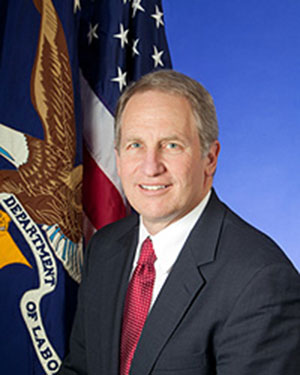
|
OSHA’s long-standing VPP, born during the Reagan years and which received staunch support during Republican years in the White House (2000-2008), came under scrutiny as the Obama administration, with a more open ear to organized labor’s concerns about the VPP use of incentive and behavior-based safety programs, took the helm.
OSHA officials, after initially appearing to agree with some of labor’s criticisms, to the point VPP’s survival was questioned, have publicly spoken in what could be called “politically correct” vanilla language. VPP is a political hotspot for the agency, with the powerful chemical and oil industries much in favor of voluntary programs and organized labor much less enamored.
And remember, it is an election year, when regulators are expected to be seen and not heard.
The differences over VPP between labor and management are borne out by statistics: about 72 percent of VPP sites are non-union, with about 28 percent being unionized.
Early this summer, OSHA went to Capitol Hill to clarify its position on the VPP.
“The agency is very proud of VPP and we believe that the program represents a necessary and effective way to recognize and reward companies that make the safety and health of their employees their highest priority,” said Jordan Barab, deputy OSHA head, testifying in June before the House Subcommittee on Workforce Protections.
“Over the past three and a half years, Dr. Michaels and I have met with the Voluntary Protection Program Participants' Association (VPPPA) board and members on many occasions and visited VPP plants across the country. We've been extremely impressed with the health and safety programs at those sites… These employers clearly demonstrate that it is possible to operate a company that is both profitable and serves as a model for businesses and industries in all sectors of the American economy. “
Barab said as of May 31, 2012, there were 2,374 total active VPP sites (Federal and State) protecting more than 911,000 workers. This figure has more than doubled since 2003, though it has decreased in the past two years, but not dramatically.
After this endorsement, Barab said, “Despite its enormous success, there are serious issues with VPP that we are striving to address. First, in these challenging economic times, OSHA must struggle to meet competing priorities and balance our resources. Make no mistake: the Department of Labor is committed to VPP, as well as OSHA's other cooperative programs, but like every other Federal agency, we need to make some very hard decisions about how to allocate our limited resources where we will get the most worker protection "bang for our buck."
Barab said later in his testimony: “We understand there are concerns that VPP is not growing as quickly as it has in the recent past…This is, in part a result of resource limitations. However, it is also attributable to OSHA's concern with maintaining the integrity of the program. VPP is recognized and respected as a quality program, one that recognizes the best of the best – companies that excel in safety and health and show that it is possible for businesses to be both profitable and safe.
Safety Incentive Programs
“In April 2011, due to our concern about workplace policies and practices that can discourage workers from reporting injuries, and following discussions with Voluntary Protection Program Participants’ Association leadership, OSHA clarified the policy and procedures governing the review of safety and health incentive programs run by VPP participants and applicants. A new policy issued in June of 2011 stated that incentive programs at VPP worksites should promote safety awareness and worker participation and should not contain features that have the potential to discourage reporting.
“But we certainly are not opposed to all incentive programs,” said Barab to Congress. “On the contrary, a positive incentive program that encourages or rewards workers for serving on safety and health committees, completing safety and health training, or reporting injuries, illnesses, near-misses, or hazards can encourage worker involvement in a safety and health management system.
“In a very few cases, we have been forced to terminate VPP company participation due to incentive issues. This is unfortunate, but we believe that VPP companies must lead the way, promoting safety programs that do not discourage reporting.
Barab concluded his testimony by saying, “VPP is an integral part of the toolbox which the Congress has provided to OSHA to accomplish our mission... Since its inception, VPP has demonstrated its value in advancing this primary goal. We are extremely proud of this program and are working every day to strengthen it. VPP will continue to have the Department of Labor's full support.”


